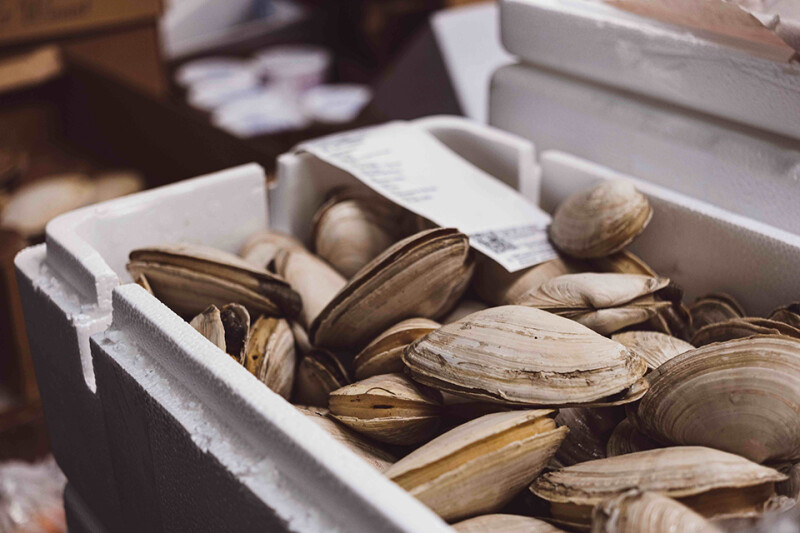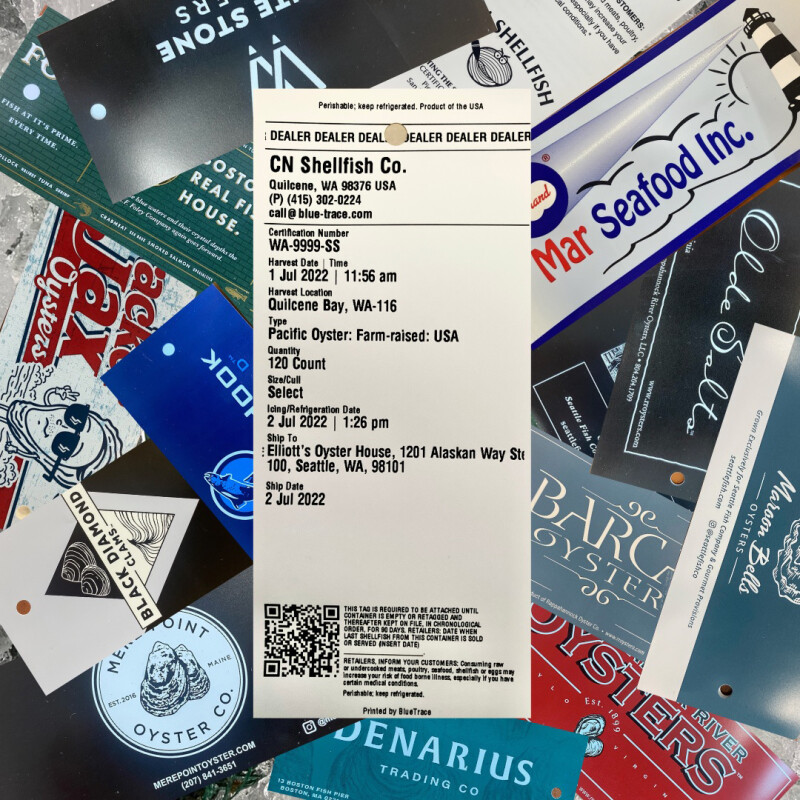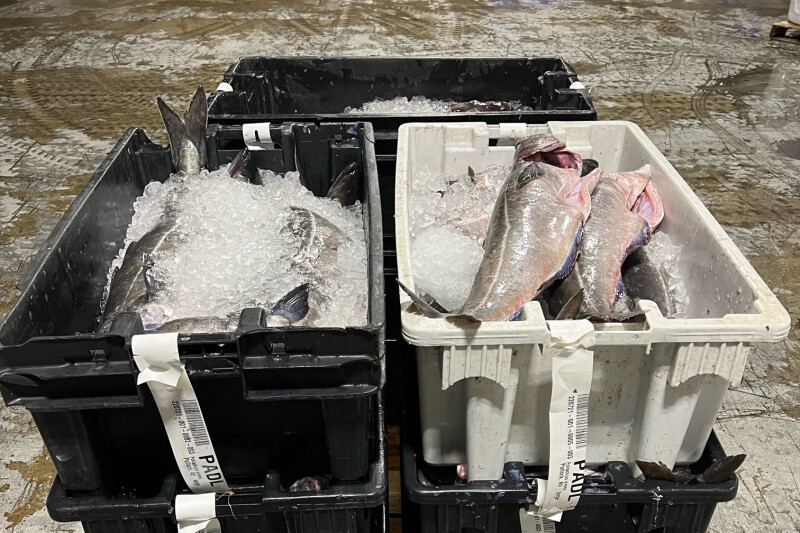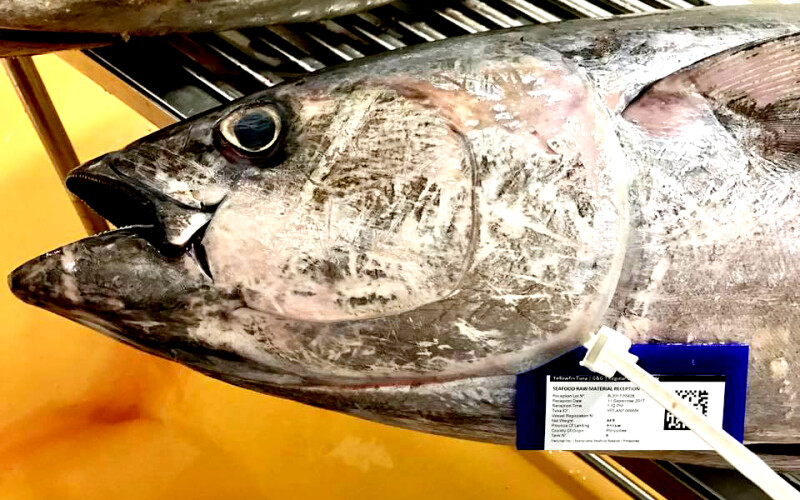The US Food and Drug Administration (FDA) issued a rule back in January 2023 on seafood traceability “requiring these entities [in the seafood supply chain] to maintain records containing information on critical tracking events in the supply chain for these designated foods, such as initially packing, shipping, receiving, and transforming these foods.” Seafood dealers and processors have until Jan. 20, 2026, to comply with the new rule, and tech developers around the world are working to develop the software and apps that will track almost all seafood from the boat to the table.
An important part of traceability will be the cost. “Traceability needs to be a byproduct of improved efficiency, rather than a tax on the industry” says Chip Terry, president of BlueTrace, a Maine-based software developer that started off creating tracking systems for oyster farmers, and is now expanding into other seafood supply chains.
Terry expresses concern that the new FDA rule will be harder for small-scale operations to comply with than for large, vertically-integrated seafood companies. “What we’re looking at are ‘key data events’, KDEs, and ‘critical tracking events’, CTEs. We identify data such as the date and time of landing, location, weights, vessel, and create a unique traceability lot code that follows that product through the CTEs.”

The CTEs largely represent the consolidation and transfer of various lots of seafood. “Oysters and other mollusks are exempt, since they are covered by the National Shellfish Sanitation Commission rules which resemble the new FSMA (Food Safety Modernization Act) rules,” says Terry. “For various reasons, scallop adductor muscles, and catfish, are also excluded. Lobsters, crabs, squid, shrimp, fish and other seafood all fall under the new rule. A lot of the tracking is currently done by writing the information down on a clipboard. The challenge is that you have so many boats and locations, it’s hard to scale that up. When you put all that information into an app, it can be accessed by a company’s accounting department, shipping department, or shared with business partners and regulators. An easy-to-use system increases efficiency and creates the digital record that the FDA requires.”
The BlueTrace app creates a QR code for each lot of seafood, down to a few pounds of fish, and prints out a label that follows the product through the supply chain. “We have mobile printers, and with everyone these days carrying a super-computer in their pocket we will be able to speed up the supply chain. Fish can be sold before it’s landed.” Terry notes that BlueTrace can also use product traceability for predictive analysis and quality control. “If we know a shipment is going from the processor to the buyer and the trip takes 4 hours, but the app shows it took 18 hours, we can suggest the buyer take a good look at it.”
While the FDA is focused on food safety, much of seafood traceability amounts to a story, which can often be used as a marketing tool.

“The seafood industry should be the industry telling the best stories,” says Terry, noting that seafood that comes with a story can often garner a price premium. “Unfortunately, 90 percent of those stories get lost in the supply chain,” he says. “But we want to figure out how to capture those with our app.”
With dozens of developers diving into what promises to be a growth market over the next few years, BlueTrace and a number of other companies are working together to standardize how they communicate. “These systems all need to be able to talk to each other,” says Terry. “Some of us are working together informally to standardize the data we collect.”
Another company that has been helping the fishing industry improve efficiency since 2004 is the Dublin, Ireland-based Emydex - which has recently been purchased by the seafood processing equipment manufacturer, Baader Global SE. According to Emydex’s North American business development representative, Terry McCorriston, the company also promotes the idea that traceability is a byproduct of improved efficiency.
“We’ve always said that,” says McCorriston. “Why not collect all the other information along with the traceability? One of our clients is the largest fish processor on the west coast of Canada, and one of the things we track for them is yield. When you can see what you’re getting in terms of fillets and trim, you can make adjustments. Maybe you need to do some more training or what have you. In an industry where 70 percent of your cost is the raw material, a one to two percent increase in yield can add up to a lot of money.”
McCorriston notes that Emydex software can also track yield in a more general way. “We can get the landing weight, and the case weight in the warehouse,” he says. “And we can tell you what boat caught those fish, where, when, and what type of gear was used.”
In Ireland, traceability has long been an issue. “What we did for a company there, Clogherhead Co-op, was put stand-alone systems aboard twelve prawn trawlers. They could print out labels onboard with all the data, such as tow numbers, GPS coordinates, and fishing gear used, and produce traceability labels. When the boat arrives in port, all that data gets uploaded, and in many cases, the prawns are already sold.”
The technology available may also leave QR codes and paper labels behind, McCorriston points out. “We’re working on using RFID [radio frequency identification] chips,” he says. “So, you put a chip on a pallet and when that pallet rolls through a warehouse door a scanner picks up all the associated data and directs the pallet to wherever it needs to go.” McCorriston notes that this type of active RFID chip is not yet cost effective. “A paper tag is a fraction of a cent, the chips, I don’t know how much they cost, but a lot more than that, which is why we’re talking about putting them on pallets, not individual cases.”
RFID chips could resolve a number of issues in the seafood supply chain, according to some in the industry. The chips could be used to track individual fish or lobsters through a supply chain where products from many boats gets mixed together, such as Maine lobster or Bristol Bay salmon. They could also be used to secure payment, triggering release of money held in escrow upon receipt of the product. The problem at present is cost, according to producers. Adding even a 10-cent chip to millions of fish or lobsters could add an untenable cost in a business where profits are made and lost on the turn of a nickel, and so far, they cannot be scanned through water or ice.

A quick search of the internet reveals pages of companies and entrepreneurs globally that have identified this need in the seafood industry, and are working on developing low-cost, often reusable, RFID chips to track seafood. It’s likely only a matter of time.
For the industry, time is of the essence. Both BlueTrace’s Chip Terry and McCorriston of Emydex believe the industry is not really taking the new FDA traceability rule as seriously as they could. “Three years might seem like a lot of time,” says McCorriston. “But these systems take time to develop and set up. If they wait, they may find we’re already booked setting up systems for other fisheries.”
Another aspect of moving forward with plenty of time is to adequately vet software developers and make sure they are a good fit. Chip Terry points out that seafood distributor Samuels & Son in Philadelphia is suing the New York-based Infor for fraud and breach of contract over alleged failures in the cloud-based business management system that Infor supplied.







